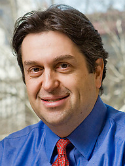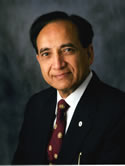Prognostic implications of papillary thyroid carcinoma with tall-cell features Journal Article
| Authors: | Ganly, I.; Ibrahimpasic, T.; Rivera, M.; Nixon, I.; Palmer, F.; Patel, S. G.; Tuttle, R. M.; Shah, J. P.; Ghossein, R. |
| Article Title: | Prognostic implications of papillary thyroid carcinoma with tall-cell features |
| Abstract: | Background: The prognostic implications of the diagnosis of a papillary thyroid carcinoma (PTC) with tall-cell features are unknown. Methods: All PTC patients identified between 1985 and 2005 were analyzed histologically. Classical PTC cases were defined as having <30% tall cells, PTC with tall-cell features (PTC TCF) as 30%-49% tall cells, and tall-cell variant of PTC (TCV) as ≥50% tall cells. All classical PTC, PTC TCF, and TCV ≥1cm in size were included. Results: A total of 453 patients satisfied the inclusion criteria (288 classical PTC, 31 PTC TCF, and 134 TCV). Classical PTC patients were younger than their PTC TCF and TCV counterparts (p<0.0002). There was an increase in tumor size from classical PTC to PTC TCF and TCV (p=0.05). Extensive extrathyroid extension and positive margins were more often present in TCV and PTC TCF than in classical PTC (p=0.0001 and p=0.03 respectively). Overall pathologic tumor (pT) stage was more advanced in TCV and PTC TCF than in classical PTC (p<0.0001). Total thyroidectomy and radioactive iodine therapy were more often performed and administered in TCV patients than in their PTC TCF and classical PTC counterparts (p=0.001 and p=0.0001 respectively). Median follow-up was 9.3 years. Ten-year disease-specific survival (DSS) was lower in TCV (96%) and PTC TCF (91%) than in classical PTC (100%; p<0.001). Ten-year distant recurrence-free survival (RFS) was higher in classical PTC (98%) than in PTC TCF (89%) and TCV (96%; p=0.03). In multivariate analysis, the presence of more than five positive nodes and extranodal extension were the only independent prognostic factors of neck and distant RFS respectively. Four (2.4%) of 165 PTC TCF and PTC TCV developed poorly differentiated or anaplastic carcinoma in their recurrence, while none of the 288 classical PTC transformed into higher grades (p=0.017). Conclusions: PTC TCF and TCV have similar clinicopathologic features that are more aggressive than classical PTC. PTC TCF and TCV have similar DSS and distant RFS but poorer outcomes than classical PTC. PTC TCF are currently being treated like classical PTC, that is, less aggressively than TCV. PTC TCF and TCV TCV have a higher rates of high-grade transformation than classical PTC. Consideration should be given to using a 30% tall-cell threshold to diagnose TCV. © 2014, Mary Ann Liebert, Inc. 2014. |
| Journal Title: | Thyroid |
| Volume: | 24 |
| Issue: | 4 |
| ISSN: | 1050-7256 |
| Publisher: | Mary Ann Liebert, Inc |
| Date Published: | 2014-04-01 |
| Start Page: | 662 |
| End Page: | 670 |
| Language: | English |
| DOI: | 10.1089/thy.2013.0503 |
| PROVIDER: | scopus |
| PUBMED: | 24262069 |
| DOI/URL: | |
| Notes: | Export Date: 1 May 2014 -- CODEN: THYRE -- Source: Scopus |
Altmetric
Citation Impact
BMJ Impact Analytics
MSK Authors
Related MSK Work








